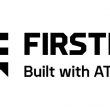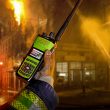APCO: Cisco demonstrates ability to link disparate devices
BALTIMORE–Interoperability, which generally has been defined as the ability of radios operating on different technologies and frequencies to communicate with each other, has been the stated—and often elusive—goal of the public-safety sector for years. At this week’s Association of Public-Safety Communications Officials annual conference, Cisco Systems gave interoperability a twist by demonstrating the ability to link analog and digital two-way radios, voice over IP phones, wireline phones, wireless phones and satellite phones.
“We call that ‘network-of-networks’ interoperability,” said Lindsay Hiebert, senior solutions marketing manager for Cisco’s emerging technologies group. “For the first time, first responders not only have the ability to leverage their RF radio network, but also multiple networks, including commercial cellular, wireless mesh and satellite networks.”
To accomplish this, Cisco leveraged its experience in VOIP and PBX communications, according to Larry Metzger, a Cisco technical leader. “The problem we typically run into is that when we try to cross-band the resources of one agency to those of another statically, we limit the number of users on those resources and tremendously lower the overall system capabilities,” Metzger said. “So we created a mechanism based on what we learned in building IP networks between Internet service providers to create a toolkit that allows the sharing of those resources dynamically when they’re needed.”
Cisco also leveraged the Inter-RF Subsystem Interface that was part of the second phase of the Project 25 digital radio standard. The ISSI was created to link P25-compliant devices manufactured by disparate vendors, but the ability to also use the standard to let radio and non-radio handsets communicate with each other originally wasn’t envisioned, Metzger said.
“The [steering committee] said it didn’t know whether it could be done or not, but we believed we could do it,” Metzger said. “We have a lot of good technical heads who said they were sure we could do it—no problem. So we went ahead and proved it could be done.”
Hiebert added that because the P25 ISSI standard is based on open IP protocols, “it was easy to extend,” to this application.
A big advantage of the capability is that first responders in the field will be able to tap into expertise that normally wouldn’t be available to them. For example, emergency medical personnel responding to a chemical spill would be able to speak over their radios with medical experts gathered around a VoIP speakerphone in a hospital conference room, to get guidance on how to treat victims at the scene, and how those victims should be triaged.
“Here’s a concrete example I use all the time,” Metzger said. “Let’s say I’m a public-safety officer and I’m responding to a domestic dispute. I arrive at the scene and the domestic dispute is in a language I don’t recognize. What do I do? I can simply patch together an expert in that language who’s talking to me on his cell phone. Without that capability, I’d be at a complete disadvantage and unable to deal with the situation, which could have simply been that someone fell in the bathroom, but they weren’t able to communicate that,” because of the language barrier.
An additional advantage of the capability is that it gives public-safety agencies a migration path to digital radio, Hiebert said, because digital handsets can be added incrementally as analog handsets are retired, and users of both still will be able to communicate with each other.
No timetable for availability of the platform has been set to date, Hiebert said. EADS and Raytheon JPS also participated in the APCO demonstration.

















